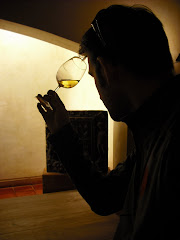In addition, you will begin to see the characteristic ‘fizz’ associated with the release of carbon dioxide. The pleasant aroma of fruity grape and wine will fill the air. Your sense of smell is key here. As the yeast ferment the juice, they require other nutrients and oxygen. You won’t have to worry too much if you bought juice from a supplier because most of the balancing of nutrients is done for you. When working from scratch with your own grapes monitoring acidity, dissolved oxygen, nitrogen levels and a whole other suite of factors play a role (so it's not just up to the sugars) to make sure the yeast get the their dietary requirements. Although the yeast can’t speak, they certainly let you know when they are stressed. When nutrient starved, they will begin to use other sources of energy and excrete unpleasant smelling byproducts. For instance if you smell, something resembling ‘rotten eggs’ it is critical that yeast nutrients be added (more on yeast and nutrients later).
When working with grape skins in your must, the floating cap should be punched down into the juice multiple times per day. 'Cap management' prevents the grape skins from drying out and rotting. In addition, mixing the cap into the liquid extracts tannin and pigments to build body, depth of colour and flavour. Tannins are astringent tasting chemical compounds found in grape skins, stems and seeds (other fruits that have high tannic content are pomegranates and blueberries – and don’t forget tea, it has lots of tannins too). They are a chemical class called ‘polyphenols’ and have been purported to act as antioxidants. Tannins are one of many factors that contribute to the ability of a wine to age over prolonged periods. We’ll revisit tannins in a section regarding how to evaluate and taste wine.
A grapeskin cap forms over the surface of the must. It must be 'punched' down a few times per day. When making white wine, the skins are generally pressed from the must immediately after crushing the grapes.
Each day, a sample of wine from the primary fermentor is removed, measured for its specific gravity, and this value is recorded. Over the course of about a week the specific gravity will approach 1.000 kilograms/liter. This is the density of water and indicates that almost all the sugar has been converted to alcohol. Checking the specific gravity each day allows you to monitor the fermentation rate which helps to predict when it will finish.
With the yeast exhausting the food supply (sugar) and raising the alcohol, a very inhospitable environment is made. Most of the yeast die off and sink to the bottom of the vessel. The amount of ‘fizz’ you see begins to diminish and the fermentation is almost complete. It is now time for the wine to be pressed from its skins (if present) and siphoned off the sludge at the bottom of the vessel. You are preparing the wine for ‘secondary fermentation’ processes.


